In the Studio: Bethany Grabert
"I'm expressing what it feels like to have an chronic pain disorder…I want my vi...

Ana María Hernando is a Colorado-based multidisciplinary artist and a 2023 Joan Mitchell Fellow. We interviewed her about her work and creative practice in February 2024. The following is an edited transcript of that conversation.
I work with textiles to make sculptures, and I have done that for 20 some years. I’m also a painter. I’ve used different materials to create both paintings and prints, but I have been mostly painting with acrylic inks on paper over the past several years. The fabrics I use, including tulle, have a lot of transparency. It's a little bit like painting with fabric.
When I'm working on a big project, I also write about it. I end up writing poems that help me think through what the work is about. My writing practice is parallel to the making of my work.
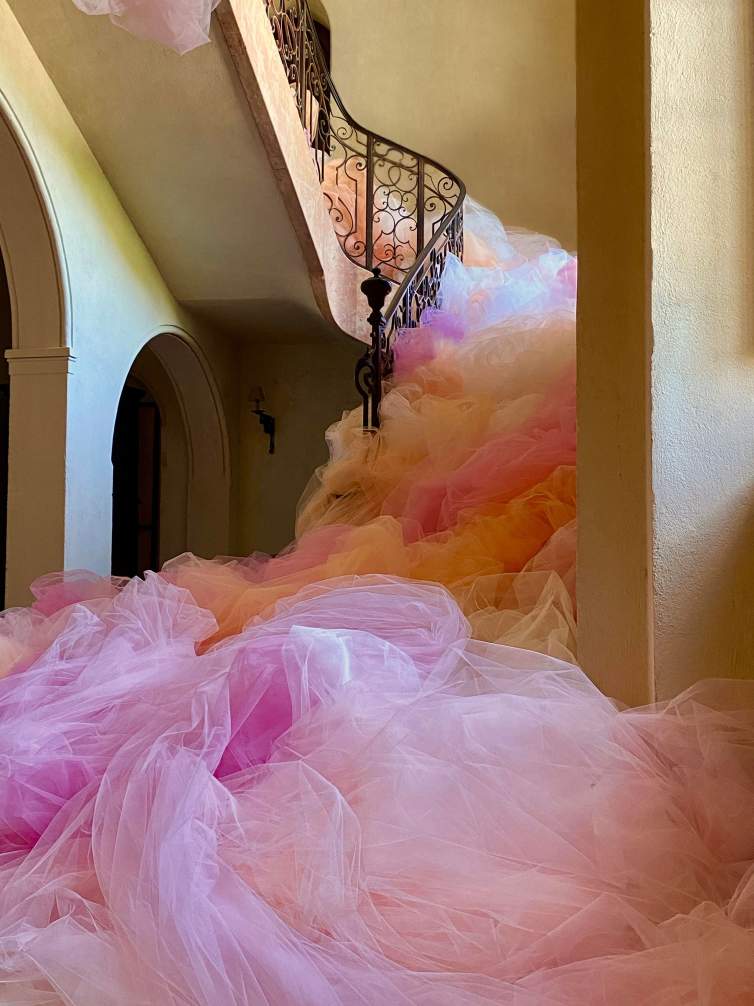
I have been an artist all my life. Like all artists, I wouldn't be the person that I am without it. On one hand, there is the immediacy of the work with different materials, and the relationships that I develop with them, which is a relationship with my body. But then the work also helps me connect with others in this more horizontal way. Because I work in installation and I bring my textile sculptures into spaces, I’m always thinking about the people who will go through those spaces, and how their bodies relate to that.
That communication with other people that I might never meet fascinates me. I think about the future and about the past, and a way of connecting also with all these other beings that we walk by, but we don't always recognize as entities—like trees and birds and all the life that is around us.
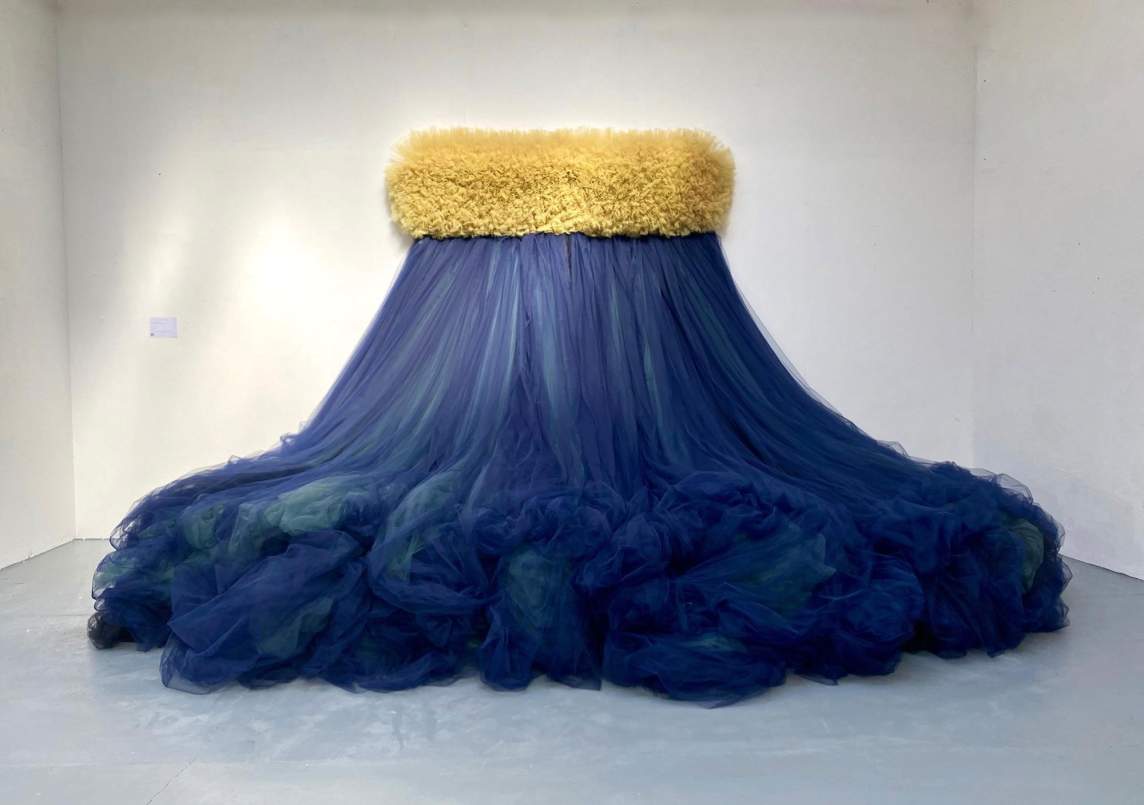
All the things I make are infused with different layers. One layer is very personal: the things I want to learn, the things I admire, the places where I want to expand. I admire women, throughout the centuries, and I’m motivated by the feminine in the world—how in this constant, sometimes quiet way, women keep going and changing the world, thinking about the big-picture, thinking about what's best for a community. I think women have done that very well in the world.
I am originally from Buenos Aires, and I come from a family of textile makers—of women getting together and working together. That is a tradition I follow and that I want to bring into the future—not only in terms of what we make, but in how we do it. That is important in my work.
I have now lived in the United States for longer than I lived in Argentina, but I see how the culture that I come from, and my Spanish grandmothers that moved from Spain to Argentina, all impact my work. There is a weaving of the individuals that creates a picture of the collective. I want that in my work.
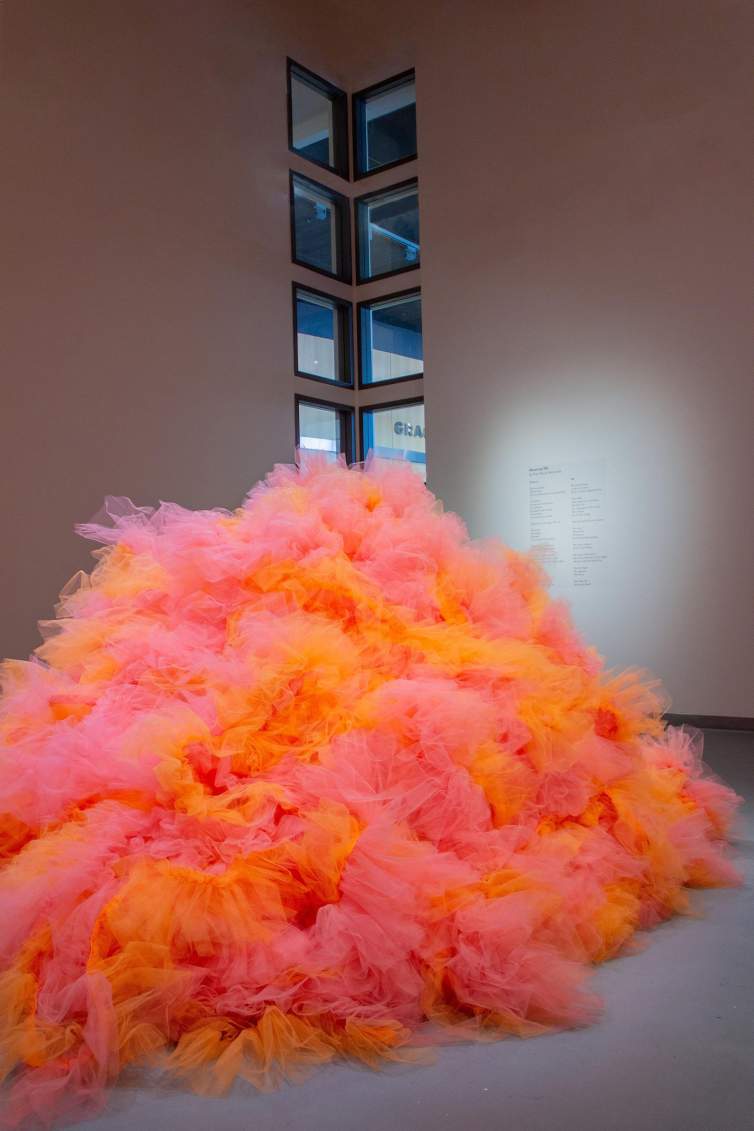
Scale fascinates me, and it's always something that pushes me to think in different ways. I make some works that are small, but then I also make large installations, including public artworks that might be spread through a whole park. When I create my tulle pieces inside museums, I love how the work takes on the space and just expands it in a regal way, but at the same time makes it intimate, so we can relate to it and feel how our bodies connect with it.
With installations, the other part is working through how to take architecture into account, and how to make visible the places that have been invisible. I like to bring attention to some corner that we don't notice, and then we discover it. If I have a show at a museum, I know a lot of the people that might go through it, might also be frequent visitors. So how can the work bring a rebirth to the space? I like that challenge, and that conversation.
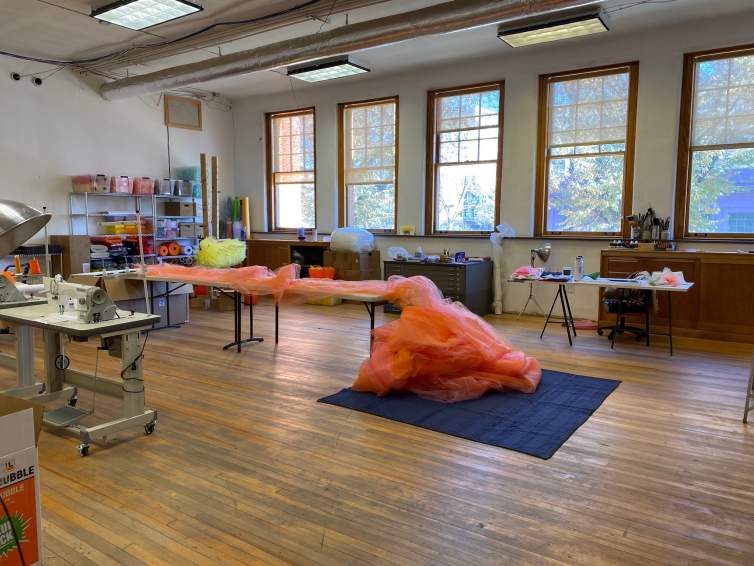
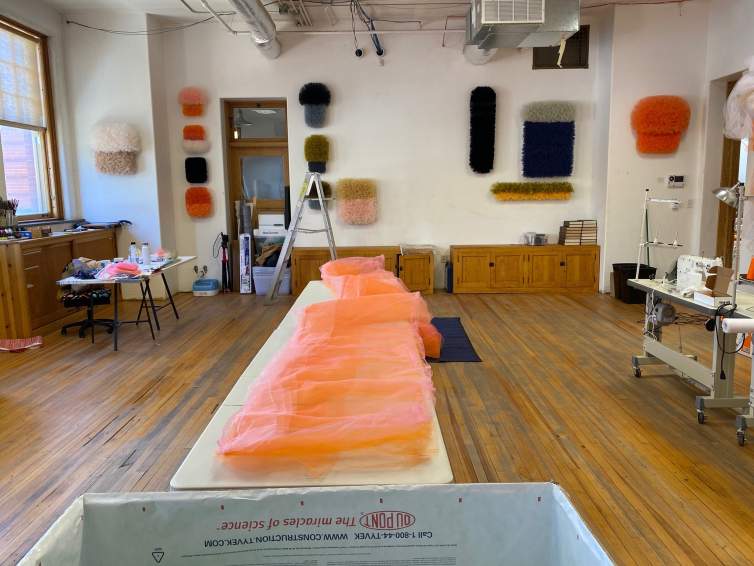
I spend most of my time at the studio, so the space of the studio is important. Right now, I’m working in a beautiful studio that has been an in-between space for me for four months. It's in a building called the Evans School. It's an old school, very close to the Denver Art Museum. It has wooden floors and beautiful windows. It's a joy to be working here. I’m moving out in two weeks, and hopefully I'll settle into another great studio.
I come to my work from different places. Sometimes an image appears first, and I have to be very soft with it. I have to listen carefully to what the work wants to be about. With my paintings, I have been painting flowers and patterns for many, many years. It has become more of a way of working in abstraction, I would say. For that, I don't have much of a plan. I choose a shape, a flower. When I travel, I take photos of plants and leaves and flowers, and I’m interested in the sculptural shape of them. I begin with that, but then the painting goes and takes me to places I had not planned.
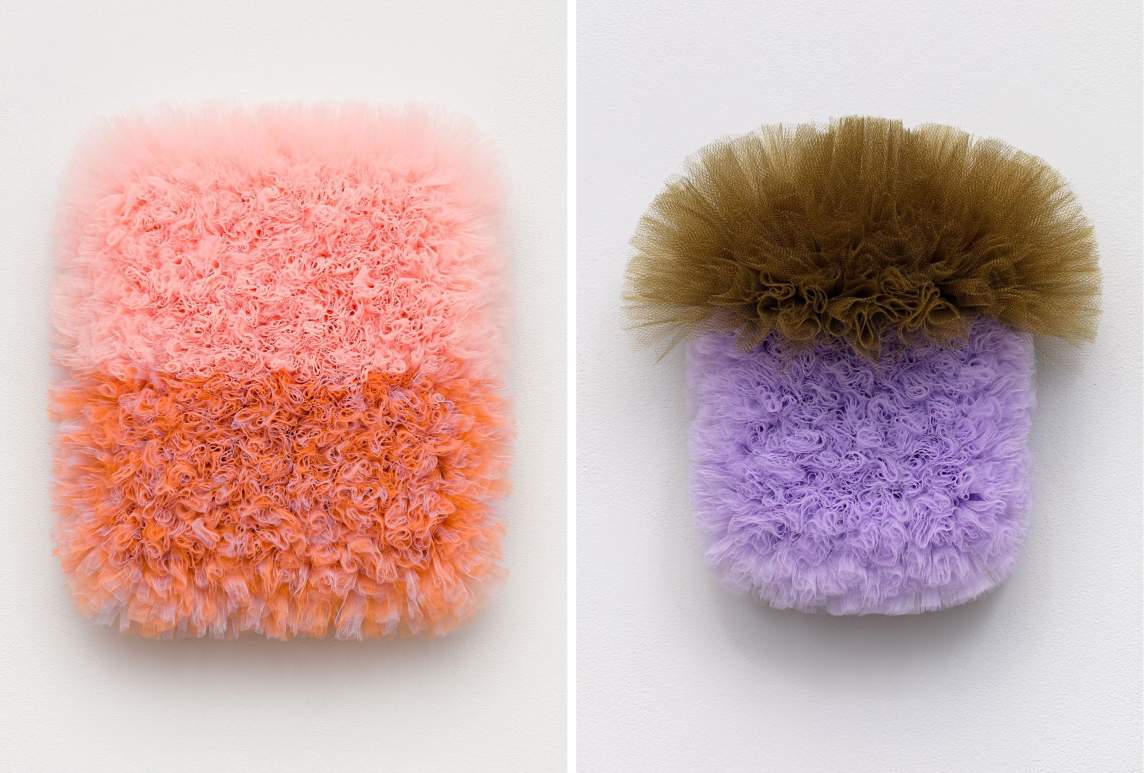
With my installations, the process is the opposite. When I’m creating work for a site, I go to the space, and I feel the space. As I was saying before, I relate to how bodies move in it. Then when I'm there, I have an idea, and I begin figuring out how to make that idea visible. Sometimes I make sketches, which also help me to create the proposals. But then with some other pieces, I just choose a color. I have been working a lot with tulle, which I love. I choose the color, and then I just begin combining it with other colors, to make new colors with the layering and new relationships by placing them together. That's some of the process.
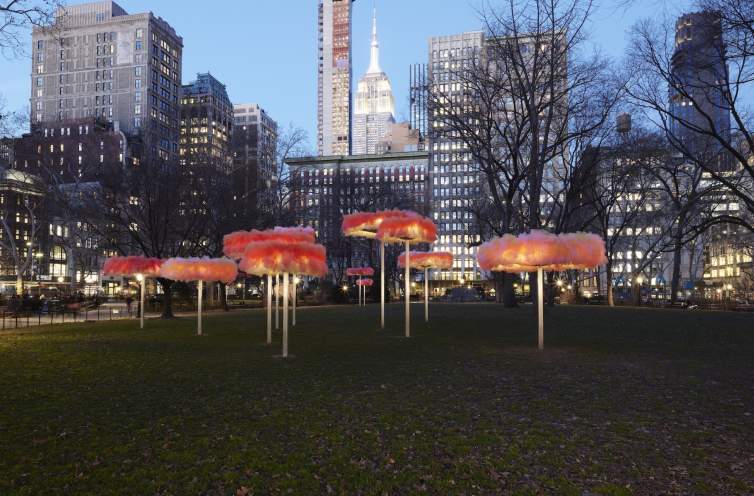
Right now I have a temporary exhibit that's currently on view at Madison Square Park in New York. The show is called To Let the Sky Know / Dejar que el cielo sepa, and in many ways it's a declaration of what I want, and my invitation to others: what do we want the sky to know? It's all made out of an abundance of tulle, on structures placed in different places in the park.
One of the things I like a lot about tulle, and most of the textiles I work with, is that they are very soft, but they have a big presence when you present them in abundance. In my work, I want to talk about power, but I never really related personally to the power of bronze or other more definite materials. But with these fabrics, I feel and like its flexibility. It's a soft power. There is an abundance and perseverance in the material, and that's the way I want to talk about power. It relates to the feminine and a presence that is obviously there. It doesn't disappear. I find that these pieces at Madison Square Park, spread out as they are, have a presence. And I like that.
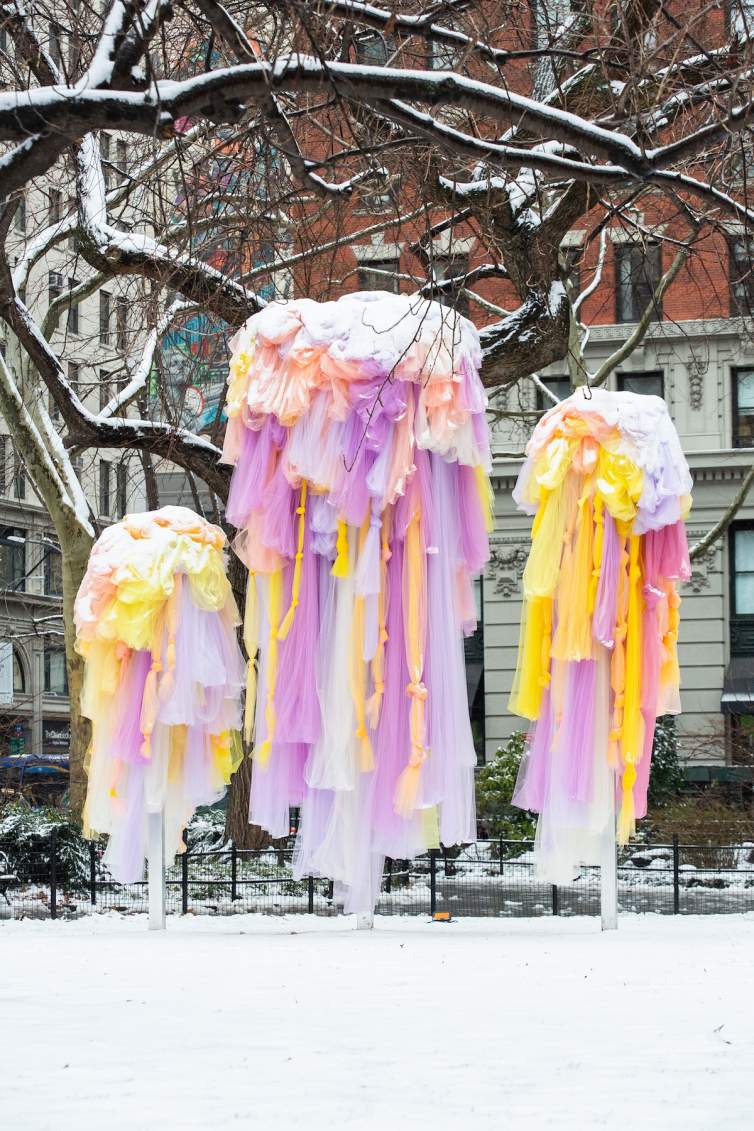
I planned this exhibit so that visitors would encounter the work coming from different places. It's such a great opportunity because 50,000 people a day visit the park. To be in such spread out conversation, it's a luxury. People have been posting on Instagram, and emailing me all of the time. With so many posting photos, it's almost, for me, like being there in New York, as if I would have a camera, and I can see how the work changes. I made these pieces with the team in Denver, and then there was the team in New York, but my biggest collaborator is the weather, because the work changes with the snow, the rain, or the wind. It's great, and requires a surrender on my part.
One thing about this show at the Madison Square Park, and also the piece that I'm working on now for the National Museum of Women in the Arts, is that I want to make a space for the longing, and a call for us to remember that even though there’s so much tragedy and we have so much disappointment about humanity, there are also a lot of wonderful things that we are working for. I want these pieces to make this thread of connecting our hearts to these wishes and dreams, as a sort of prayer for what we can do and who we can be. I’m hoping that this work from New York can travel. It might travel here to Denver and to Boulder.
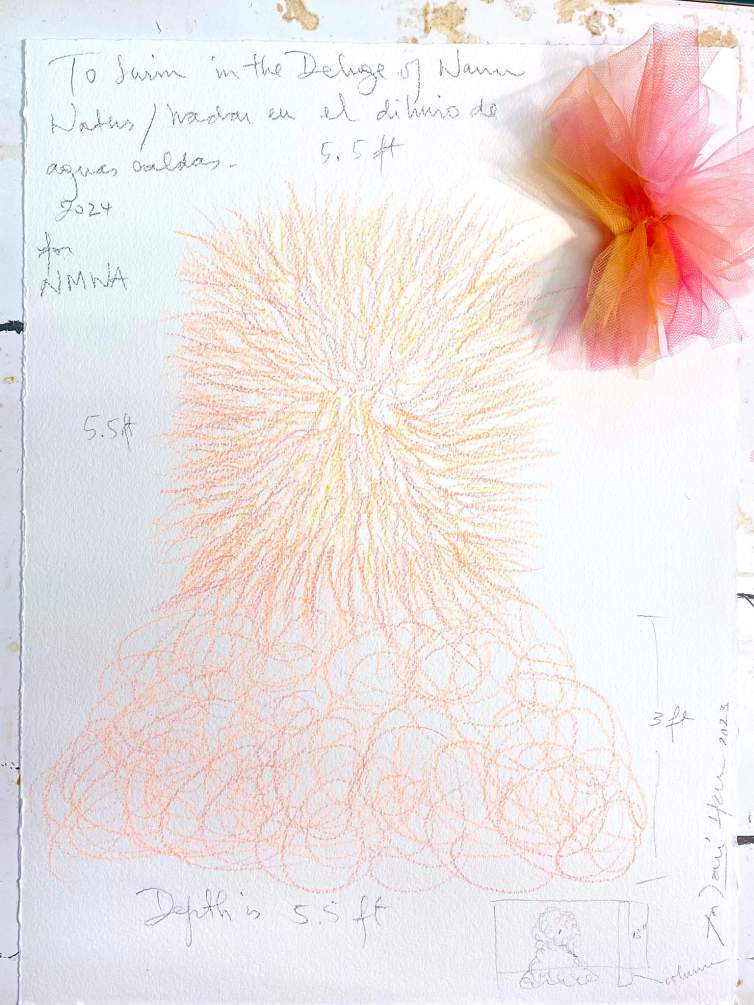
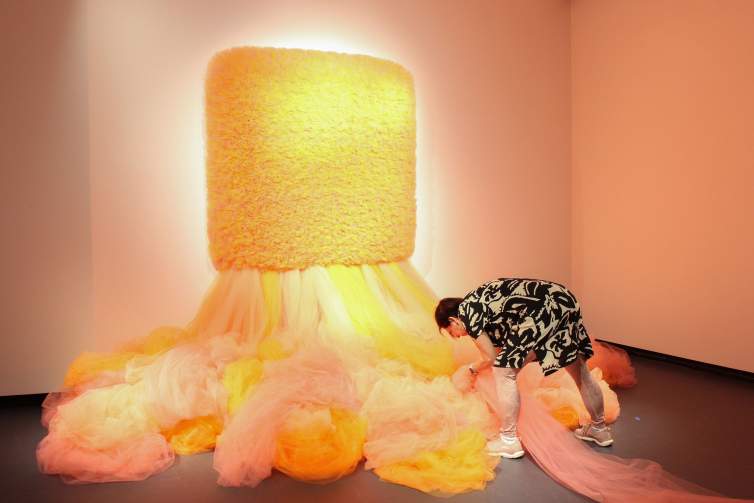
As I mentioned, I'm working on a new piece for the National Museum of Women in the Arts. It's for a show called Women to Watch 2024, which opens April 10. There are women from all over—mostly from the United States, but all over the world. I'm going to be representing Colorado. This piece is made with a variety of oranges and pinks. I love colors in general, but those colors for me have a vibrancy. I hope it invites what I was talking about before—that idea of connecting us with a life force and longing.
I also have an upcoming show in Switzerland in the fall, another one at La Napoule Art Foundation at the end of the summer. And then I have other projects and commissions. It's one of the challenges of being an artist—how do you keep track of all of it, because when projects are at different stages, they each require so much of you. It’s easy to lose track, and forget the heart. It's like holding a flower in the forest. How do you do that?
I'm also so grateful to the Joan Mitchell Foundation to be participating in the Fellowship program. I can see how it's a community that’s happening and I feel very supported. As an artist, it's so vulnerable to show your work and to be out there. To have a community that holds you, I think it's important for all artists. The Joan Mitchell Foundation’s community spreads through miles and miles and miles. I’m very grateful to be a part of that.
Interview and editing by Jenny Gill. Learn more about Ana María Hernando’s work at anamariahernando.com and on Instagram.